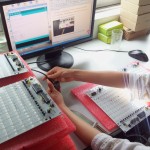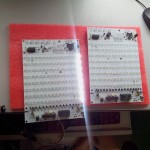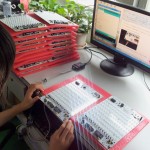Lot’s of people are excited about the Raspberry Pi, a complete computer for
The initial shipment is entirely sold out, and there are 200,000 more on order. Lots of people have been saying that this is the end of the Arduino, as it’s about the same cost, but is a full linux system with keyboard, mouse, and hdmi video output.
We think this is an oversimplification. Arduino is fantastic at interfacing to the physical world in a way that no linux (or Windows) PC could hope to approach at any cost.
The Pi does have a GPIO connector, but it pales in comparison to the humble Arduino. No built in PWM (servos anyone?) and no Analog to digital conversion.
We consider both platforms complementary to one and other, like pie and ice cream. Of course we call the result “Raspberry Pi à la mode”, the Linux side handels all of the displays, human interfaces, and number crunching. The low power Arduino compatible “à la mode” board handles sensors, motors, and provides a highly accurate real time clock. 
“À la mode” is an Arduino clone specifically designed to interface with the Raspberry Pi. You can of course connect a standard Arduino to a Pi USB port using a cord, but when you want a turnkey solution, how about an Arduino compatible “plate” (what the Pi folks call shields) that fits right on top of the Raspberry Pi with direct access to GPIO port?
You can plug your existing Arduino shields right in, and you can even run the Arduino IDE on the Pi. Since the Pi’s core mission is to provide equal access to computing to all children, this will also give the kids the opportunity to mix it up “Arduino-style” with real world hardware.
We couldn’t have a vanilla add-on, so we added:
- A battery backed real time clock: RTC: DS3231 (same as ChronoDot)
- uSD card for logging
- Socketed Atmel Atmega 328p in case you make a wiring mistake and need to replace it.
We’re sending off for prototype boards soon, so if you have feedback, let us know!




